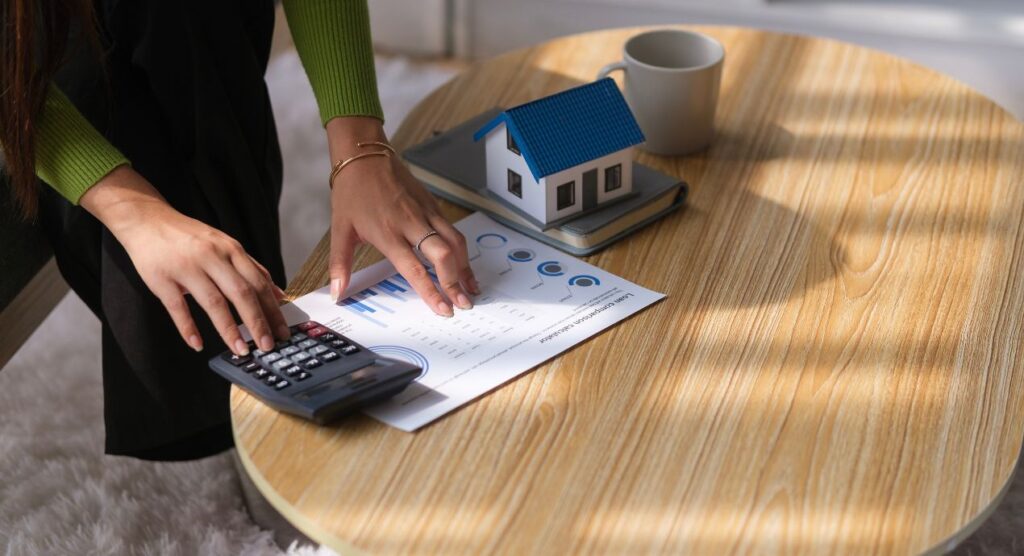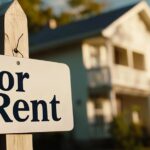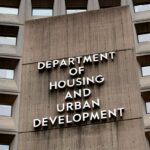According to Bankrate‘s recent Hidden Costs of Homeownership Study, the average yearly expenses for owning and maintaining a typical single-family home in the U.S. in 2025 will be $21,400. Bankrate refers to them as “hidden” since homeowners frequently fail to consider or anticipate them, particularly when they are creating a budget for a property purchase. However, these recurring costs serve as a reminder that homeownership entails far more costs than just the initial purchase price and the monthly mortgage payments.
For many Americans, purchasing a home is the largest expense they’ll make and the biggest financial decision they will ever experience. However, many first-time homeowners are still shocked to discover that, after they have the keys, housing expenses often still or continuously arise—building up to a substantial, often stressful amount.
“For most folks, buying a home is the most expensive transaction of their lifetime,” said Mark Hamrick, Senior Economic analyst at Bankrate. “After the purchase is complete, we find that affordability issues rank high on the list of regrets. While homeownership is still associated with the proverbial American dream, it is prudent to consider and plan for the many ongoing costs of ownership, not just getting over the threshold of the down payment and settlement.”
As homeowners frequently note, homes have always been a bit of a “money trap.” However, there’s a good reason why that chasm appears to be deeper than before. A highly competitive housing market, rising interest rates, and inflation have all contributed to the recent increase in the cost of homeownership in the U.S.
Home Costs Vary by State—By a Long Shot
The price of purchasing a spot is where it all starts. Real estate website Redfin reports that as of April 2025, the typical home price was a near-record $437,942, up 44% from 2020. The fact that mortgage rates have doubled in the last five years is another blow. In summary, homebuyers now have to take out larger loans, and borrowing is much more expensive.
While it may come as no surprise to some, three Western states and two Eastern states are among the top five with the highest hidden expenses of homeownership.
Top 10 Most Expensive States with the Highest Homeownership Costs
- Hawaii ($34,573)
- California ($32,262)
- New Jersey ($29,751)
- Massachusetts ($29,277)
- Washington ($27,444)
- Connecticut ($27,170)
- New Hampshire ($25,870)
- Colorado ($25,766)
- Florida ($24,713)
- Rhode Island ($23,885)

Conversely, the list of states with the lowest hidden homeownership expenses includes two Midwesterners and three Southerners.
Top 10 Most Expensive States with the Lowest Homeownership Costs
- West Virginia ($12,579)
- Mississippi ($14,810)
- Indiana ($14,903)
- Missouri ($15,349)
- Arkansas ($15,362)
- Iowa ($15,737)
- Michigan ($16,045)
- Ohio ($16,259)
- Alabama ($16,635)
- North Dakota ($16,389)

The True Cost of Home Prices, Expenses & Maintenance
In order to comfortably purchase a home in the modern day, Americans require a six-figure annual household income, specifically $116,986, according to Bankrate’s 2025 Housing Affordability Study. Regretfully, the cost of residential real estate is rising faster than American salaries. According to a recent survey by the home improvement website Fixr, the median household income has only climbed by 40% over the past 25 years, but property prices have increased by 197%.
However, homebuying is only the first step: Once a person owns a property, the financial strain increases. Larger property taxes and homeowners insurance policies (and premiums) are associated with higher home prices. Additionally, over the past five years, inflation has been showing up in the form of rising prices for labor, goods and services, and supplies for home remodeling and construction. According to the U.S. Bureau of Labor Statistics, the cumulative inflation rate from April 2020 to April 2025 was 25%, meaning that an item that cost $100 five years ago now costs $125.
Because of this, consumers are especially suffering from home maintenance costs, which account for the largest portion of the hidden costs at $8,808 annually. The cost of utilities and energy is nearly doubled ($4,494), property taxes are doubled ($4,316), home insurance is four times higher ($2,267), and internet and cable are six times more pricey ($1,515).
These costs have become one of the main causes of regret among homebuyers. Nearly half of homeowners (42%) who had at least one concern about purchasing their property said that maintenance and other unforeseen expenses were more costly than anticipated, according to Bankrate’s 2025 Homeowner Regrets Survey. Indeed, among those who had them, the most frequent regret was the unanticipated maintenance and the continuous financial strain of minor repairs and upkeep.
While Pricey, the American Dream is Still Alive for Many
According to Bankrate’s analysis, homeownership expenses vary greatly across the nation, with the most costly state, Hawaii, having costs that are almost three times higher than those of the least expensive state, West Virginia.
The states on the East and West Coast often have the biggest hidden costs, which is not surprising. They are so costly in large part because of their high property taxes and high housing values, which affect maintenance expenditures.
It may be safe to say that the American Dream has long been associated with homeownership and the stability it provides. According to Bankrate’s 2025 Home Affordability Survey, roughly 82% of American adults believe that owning a home is still a part of the American Dream, more so than having a successful profession (66%) or being able to retire (71%), among other things.
When asked which, if any, of the following they consider to be part of the American Dream, respondents said:
- Owning a home (82%)
- Being able to retire (71%)
- Having a successful career (66%)
- Owning a car, truck or other vehicle (56%)
- Having children (44%)
- Getting a college degree (35%)
- None of the above (7%)
Note: Respondents are U.S. adults and could select more than one response.
Additionally, some 84% of Gen Xers and 89% of baby boomers, respectively, think that owning a home is a component of the American Dream. Homeownership is also highly valued by millennials (74%) and Gen Zers (78%). According to both generations, it is more important than other indicators of financial success.
“Americans consider homeownership to be the cornerstone of the American Dream, more so than anything else,” said Greg McBride, CFA, Chief Financial Analyst for Bankrate. “This belief hasn’t wavered and has only gotten stronger despite increasing affordability challenges with a record high percentage of Americans, 82%, citing homeownership as part of the American Dream.”
To read more, click here.






